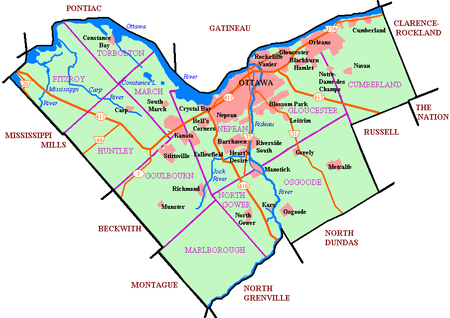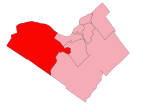Torbolton Township

Torbolton is a geographic township and former municipality that was originally part of Carleton County in eastern Ontario, Canada. Torbolton is located in the north-western part of the county, bordered to the southwest by Fitzroy Township, to the southeast by March Township and to the north by the Ottawa River. It includes the communities of Baskin's Beach, Buckham's Bay, Constance Bay, Dirleton, Kilmaurs, MacLarens, and Woodlawn. The township was established in 1821. Although white pine was harvested from the forests of this area from the beginning of the 19th century, the first permanent settler is believed to have been David MacLaren in the 1820s. In 1974, the township was amalgamated with Huntley and Fitzroy to form West Carleton. In 2001, West Carleton became part of the new city of Ottawa. Torbolton took its name from the village of Tarbolton in Ayrshire, Scotland. Lord Torbolton was one of the titles of Charles Lennox, 4th Duke of Richmond, who was Governor General of British North America from 1818 to 1819. According to the Canada 2016 Census, the Township had a population of 6,974. As of the Canada 2021 Census, this had increased to 7,000.
Excerpt from the Wikipedia article Torbolton Township (License: CC BY-SA 3.0, Authors, Images).Torbolton Township
Dunrobin Road, Ottawa
Geographical coordinates (GPS) Address Nearby Places Show on map
Geographical coordinates (GPS)
| Latitude | Longitude |
|---|---|
| N 45.466666666667 ° | E -76.075 ° |
Address
Dunrobin Road 3858
K0A 3M0 Ottawa (West Carleton-March)
Ontario, Canada
Open on Google Maps



